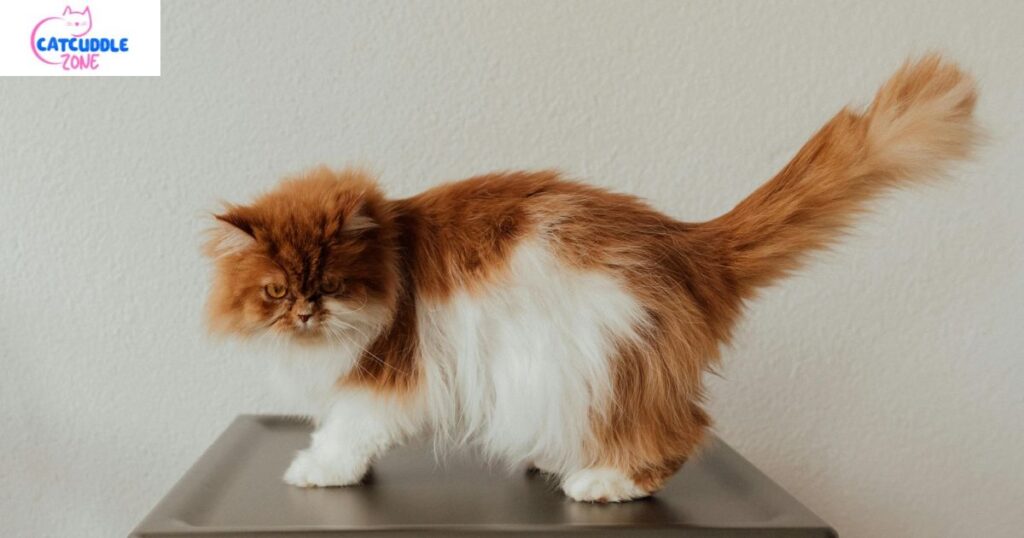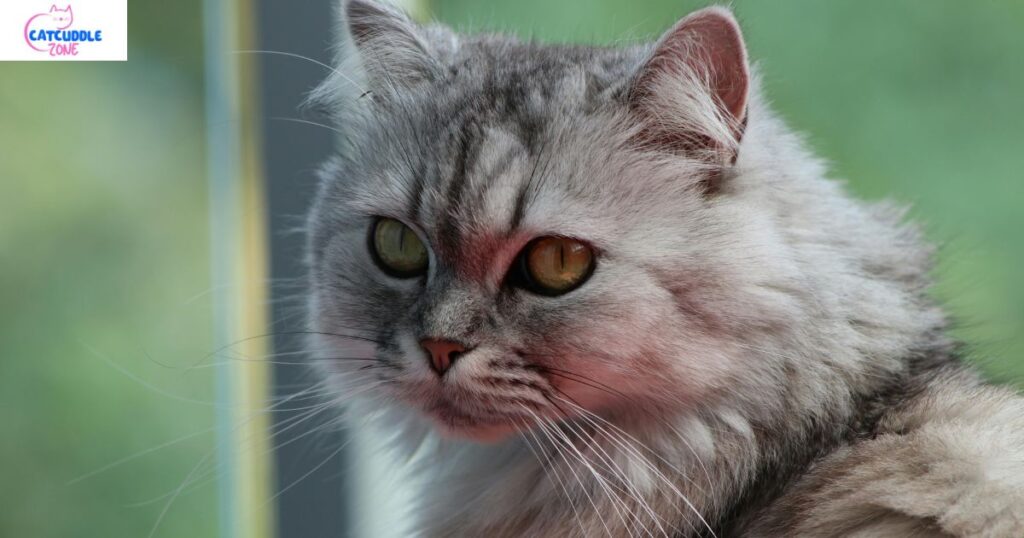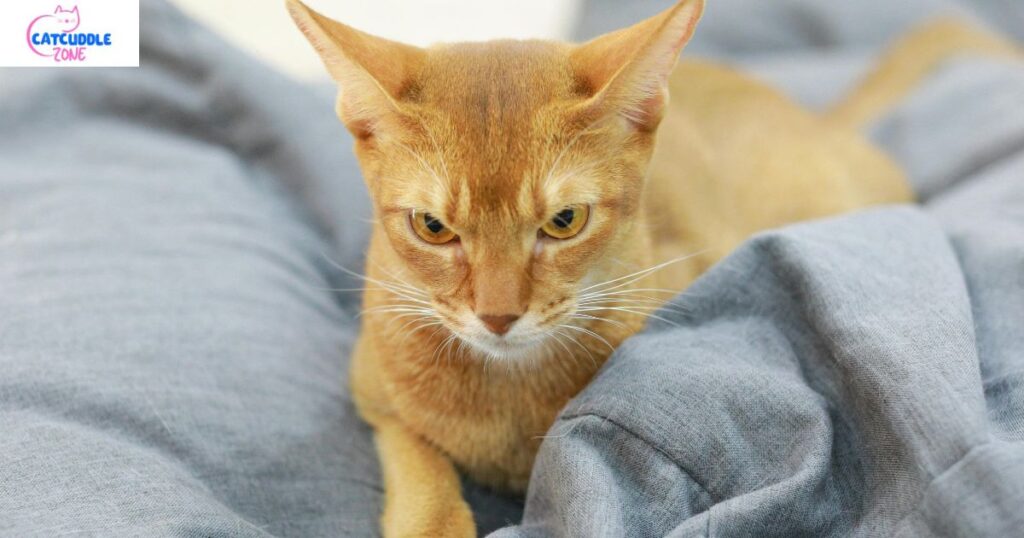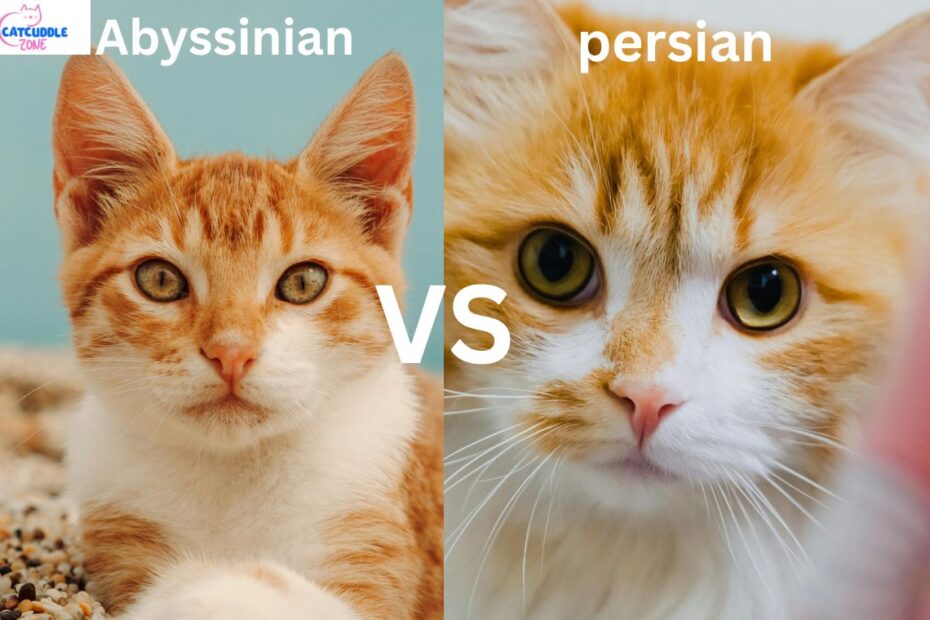Introduction to Abyssinian and Persian Cats
When it comes to choosing between the Persian cat vs Abyssinian cat, pet lovers often find themselves comparing two very different yet equally charming breeds. The Persian cat breed is famous for its luxurious long coat, calm nature, and affectionate personality, making it one of the most popular choices for families looking for a gentle companion.
On the other hand, the Abyssinian cat breed is admired for its playful energy, intelligence, and striking ticked coat that reflects its exotic history. This cat breed comparison highlights the differences in looks, personality, and care needs, helping future cat owners decide which companion suits their lifestyle best.
History & Origin of Abyssinian vs Persian Cats
The Abyssinian cat has its origin in Ethiopia making it a mystical breed. There are also some experts who believe that ancient Egyptians regarded Abyssinians as holy cats. They are among the oldest breeds of shorthair cats and are famous due to their classical and wild appearance.
The Persian cat which was first in Iran is also interesting. This breed was introduced in Europe during the 1600s and it became a favourite among the royalties. They were longhair cats (Persian), which meant luxury and serenity. Persians are today known throughout the world as traditional Persian flattened-face cats.

Physical Appearance & Size Comparison
Concerning the size and weight of the Abyssinian, the cats are medium in size, with a weight ranging between 6 and 10 pounds. They are short-coated, have an almond-shaped eye, and are lean and muscular. Their coats of ticks make them appear as little cougars.
Persian size and weight on the other hand is heavier and varies within the range of 7-12 pounds. They have round faces, short noses and long fluffy coats which make them appear soft and royal. The difference between the Abyssinian and the Persian size is not excessive, but the Persians seem bigger when having long fur.
| Feature | Abyssinian Cat | Persian Cat |
| Size | Medium, 6–10 lbs | Medium-Large, 7–12 lbs |
| Coat | Short, ticked | Long, thick |
| Face | Almond eyes, slim | Round, flat face |
Personality & Temperament Differences
The Abyssian character is energetic, inquiring, and outgoing. These cats are climbing and exploring and playing. Abyssinian character traits and personality are the ones that can be compared to families that have playful pets. They are very intelligent and can be easily trained.
The Persian nature is the reverse. Their Persian cat’s affectionate behavior is known to be calm, quiet and loving. These cats are well behaved pets and they love tranquil households. They are traditional representatives of relaxing breeds of cats and are ideal companions to those who desire to have cuddly cats that can relax.

Activity Levels & Exercise Needs
Active breeds such as the Abyssinian cat require lots of mental and physical stimulation. They belong to the active cats vs lazy cats continuum in which they are obviously on the active side. There should be climbing trees, puzzles, and toys given by their owners.
On the contrary, the Persian character is less stressful. They are of the quiet types of cats. Exercise is not that important but they would like to have short play time instead of long exercises. They prefer sitting in laps as opposed to high furniture.
Health & Lifespan Comparison
In considering Abyssinian health concerns, owners are to be on the look out for health problems in Abyssinians (PRA, PK Deficiency). They should be taken to the vet regularly.
To Persians, health issues of Persians (PKD, brachycephalic syndrome) is prevalent because of their flat faces. Difficulties in breathing and renal disease may reduce life expectancy. Nevertheless, they do well with good treatment. Abyssinian or Persian, which one lives longer? The lifespan of Abyssinians is 14-16 years, and the Persian lifespan is 12-15 years on average.
| Health Comparison | Abyssinian | Persian |
| Lifespan | 14–16 years | 12–15 years |
| Common Issues | PRA, PK Deficiency | PKD, Breathing Issues |
Grooming & Maintenance Requirements
Abyssinian grooming needs are minimal. Their short coats do not match easily, and weekly brushing is enough. Owners often ask, “Do Abyssinians shed a lot?” The answer is moderate, but much less than Persians.
Persian grooming requirements are intensive. Daily brushing, eye cleaning, and regular baths are necessary. Many wonder, “Are Persian cats high maintenance?” The answer is yes. The Abyssinian vs Persian grooming comparison clearly shows Persians require far more effort.

Diet & Nutrition Considerations
The two breeds require a balanced diet. The Abyssinians are active breeds of cats, hence high-protein food helps them sustain the level of Abyssinian intelligence and energy.
Persians, being less active, need controlled portions to prevent weight gain. Special diets may help with their long coat and digestive health. Owners often ask about hypoallergenic cat breeds vs non hypoallergenic cats. Neither Abyssinians nor Persians are fully hypoallergenic.
Cost, Availability & Adoption
The cost and price of Abyssinian vs Persian is based on location and breeder. Abyssinians typically sell at a cost of between $800-1500 whereas Persians sell between 1200 to 2000. Adoption fees are much lower if you find them in rescue centers.
In the USA, both breeds are popular. Persians are more widely available due to their fame as Persian flat-faced cats, but Abyssinians are also loved for their unique history.
Which Cat is Right for You?
Families often wonder, “Which cat is more affectionate, Abyssinian or Persian?” The Persian is often the more cuddly one. Are Abyssinian cats good with kids? Yes, they love interactive play. Are Persian cats dog-friendly? Yes, if introduced slowly.
The choice depends on lifestyle. If you want an active, curious cat, the Abyssinian is perfect. If you prefer a calm, relaxed pet, the Persian is ideal.
Quick Comparison Chart: Abyssinian vs Persian
| Trait | Abyssinian Cat | Persian Cat |
| Origin | Abyssinian cat origin Ethiopia | Persian cat origin Iran |
| Size | Abyssinian size and weight 6–10 lbs | Persian size and weight 7–12 lbs |
| Temperament | Abyssinian personality traits and temperament – active, curious | Persian cat affectionate behavior – calm, loving |
| Grooming | Low – short coat | High – long coat |
| Health | Abyssinian health issues – PRA, PK Deficiency | Persian health problems – PKD, breathing |
| Lifespan | 14–16 years | 12–15 years |
| Price | $800–$1500 | $1200–$2000 |
In conclusion, this comparison chart Abyssinian vs Persian shows clear differences. The Abyssinian cat vs Persian cat breed comparison enables the pet lovers to make decisions. It does not matter which type of breeds of cats you pick, the active cats such as Abyssinians or the docile cats such as Persians, they still make great companions.
Frequently Asked Questions
Are Abyssinian cats snuggly?
Abyssinians are loving and do not lap; they express love by means of play and proximity.
Which breed of cats resembles Abyssinian?
The Somali are practically identical, but of the same family and the same disposition.
How rare is an Abyssinian cat?
They are also not very common in the U.S., being one of the breeds that is not very common in ownership.
Are Persian cats calmer?
Yes, Persians are reputed to be one of the most relaxed and most laid-back cat breeds.
Which is the cosiest breed of cat?
Ragdoll is a cat breed that is referred to as the cuddliest and most loving.
What do Abyssinian cats have in common?
They are unique because of their ticked coat, high intelligence and energetic character.
